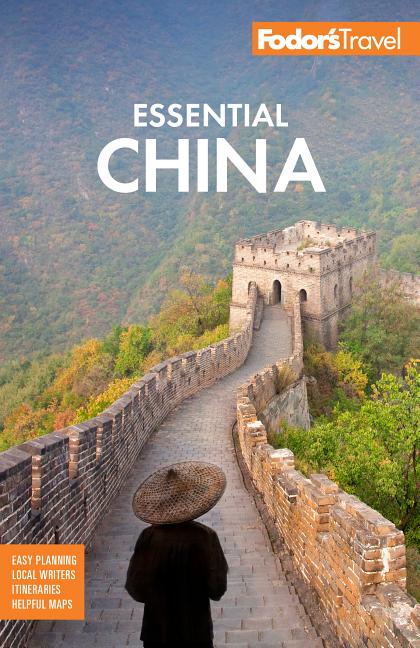Shanghai and the Chinese Heartland
Shanghai, Anhui, Jiangsu, Hubei, and Sichuan, 11–14 days
Eastern China is a showcase of China's amazingly diverse topography. Much of this area lies in the fertile Yangtze basin—a misty watercolor of blues, greens and yellows, whitewashed farmhouses, and dense networks of rivers, waterways, and canals. Journey from the glittering skyscrapers of Shanghai to the wilds of Huangshan and the Yangtze River. Because of the distances covered, it's suggested to fly some legs of this trip to save time.
Day 1: Shanghai
Shanghai is all about the country's future, not its past. Catch the ultrafast train from the airport to the city center. The most convenient place for hotels is the neighborhood of Puxi, which includes the Former French Concession, close to most of Shanghai's most popular attractions. Stay in the delightful Magnolia Bed and Breakfast, a small boutique hotel south of Jing'an Park. After checking in, explore some of Shanghai's fascinating colonial history by foot or taxi. Walk through Xintiandi, where restored traditional houses mix with bars, boutiques, and galleries. Spend some time searching for the perfect souvenir on Nanjing Road. Alternatively, you could time travel through 3,000 years of Chinese art and antiquities at the Shanghai Museum. For dinner, head to longtime favorite Grape for home-style Chinese food in a friendly atmosphere.
Day 2: Paris of the East
The next day explore The Bund by foot, taxi, or subway. This waterfront boulevard is the city's best spot for people-watching and culinary exploration. For a bird's-eye view of China's sprawling economic capital, head across the Huangpu River to Pudong, where you can ascend the Oriental Pearl Tower, the Jinmao Tower, or the Shanghai World Financial Center, also known as the "Bottle Opener." There's also Yu Garden, where you can relax amid meticulous landscaping and traditional architecture. In the alleys round Yu Garden are many local restaurants serving terrific food and tea in unpretentious surroundings.
Days 3–4: Suzhou and Tongli
(Suzhou is 35 minutes by high-speed train from Shanghai; Tongli is 90 minutes by taxi from Shanghai)
Regarded in ancient times as heaven on earth, Suzhou retains many of its charms despite the encroaching forces of modernization. Stroll through elegant gardens and temples along the gently flowing branches of the Grand Canal.
Suzhou is close enough to work well as a day trip from Shanghai but it's highly recommended to spend the night and catch a bus the next day to Tongli, a restored water village. If you're staying in Suzhou, book a room at the Pan Pacific Suzhou, situated in a lovely garden complex. A quick walk or taxi will take you to the Master of the Nets Gardens, which holds Chinese opera performances on summer evenings. Also make sure to visit the iconic Suzhou Museum, designed by I.M. Pei. For a memorable meal, try the fragrant soup-filled dumpling at Xichengyuan Wonton near the Master of the Nets Gardens. After two days spent exploring Suzhou and Tongli, take the train back to Shanghai where you can catch a plane to Huangshan.
Days 5–8: Huangshan
(1 hour by plane from Shanghai to Tunxi)
One of China's best-known natural wonders, Huangshan (Yellow Mountain) is a breathtaking range of 72 jagged peaks punctuated by fantastically twisted pine trees and unusual rock formations. Tunxi, or Huangshan City, is about 40 miles from Huangshan. After landing in Tunxi, hire a taxi or take a minibus to Tangkou at the base of the mountain. There are numerous ways to the top, either on foot or by cable car. Spend a night at the Baiyun Hotel,one of the mountaintop guesthouses, before waking at dawn to watch the sun rise over an eerie sea of fog.
After visiting Huangshan, the quickest way to continue on to the Three Gorges is to return to Shanghai where you can catch a flight onwards to Yichang, in Hubei Province.
Days 9–13: Yichang and The Three Gorges
(2 hours by plane from Shanghai to Yichang)
A cruise along the Yangtze River through the Three Gorges is an unforgettable experience. Along the way you'll pass over abandoned metropolises that were humming with life only a few years ago, as well as their modern counterparts that were built on higher ground. One recommended cruise line is Victoria Cruises, which offers a range of excursions up and down the Yangtze.
The town of Yichang sits at the eastern entrance of the Three Gorges. Cruises will sail through the Gezhou Dam and offer excursions to the Three Gorges Dam site, Fengdu, or "Ghost City," and the Little Three Gorges before disembarking at Chongqing.
Day 14: Chongqing
(5 days by boat from Yichang)
After finishing a cruise along the Yangtze, Chongqing has enough to recommend a day or two of exploration. Built into the side of a hill, the city is a maze of steep stairways, hills, and tunnels. Most of the main tourist sites and hotels are located around the Jiefang Bei area. The convenient Howard Johnson ITC Plaza offers plush rooms and an excellent restaurant. After settling in, walk to 18 Steps, one of the most curious attractions in Chongqing. Not to be missed is a ride in a cable car, where you are treated to a bird's-eye view of the Yangtze and the sprawling city below. For traditional Sichuan cuisine, head to Xiaotian'e Sichuan Restaurant on the banks of the Yangtze to indulge in hotpot and other fiery specialties.




